
The Best Odor Control for Guinea Pig Bedding. Guinea pigs, or cavies, must be housed in a large cage. Improper cage maintenance techniques can lead to bad odors and a sick guinea pig. Many cavy owners use wood chips, but the oil in the wood is harmful to the guinea pig's skin and respiratory tract, resulting in chronic illness, infection and early death. A dirty cage can lead to odor, skin and foot infections. The key to keeping a guinea pig healthy, happy and odor-free is daily cage cleaning and the use of recycled paper bedding and timothy hay.
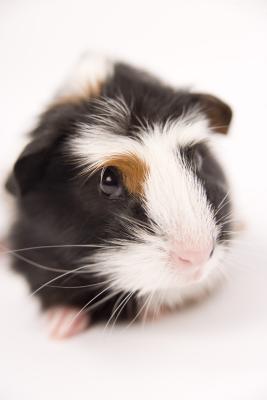
Open the cage and remove the guinea pig. Give the guinea pig to a friend who can hold and play with the cavy or allow the guinea pig to run around in a "safe room" that's free of other pets, electrical cords and other dangers.
Remove the guinea pig's water bottle, toys and the guinea pig's hut or play house.
Empty the contents of the guinea pig cage into a large trash bag.
Mix one part bleach and three parts water in a spray bottle and spray down the interior of the guinea pig cage. Spray the cage bottom and the cage rungs. Allow the bleach and water solution to sit on the cage and bars for two full minutes.
Wipe down the guinea pig cage with a lint-free rag.
Place a section of newspaper over the floor of the guinea pig cage. This will catch and absorb urine and water leakage from the water bottle.
Place a 2- to 3-inch layer of recycled paper bedding over the newspaper on the floor of the guinea pig cage. This will absorb urine and it will prevent odors.
Put a 3-inch layer of timothy hay on top of the recycled paper bedding and place some in a wire trough, mounted on the side of the cage. The timothy hay will give off a sweet smell and it will provide the guinea pig with bedding that it can rearrange. Guinea pigs also eat timothy hay.
Wash the guinea pig's water bottle, playhouse and other accessories in the sink. Wash with dish soap and warm water. Rinse thoroughly, dry the items, refill the water bottle and replace these items in the guinea pig cage.
Replace the guinea pig in his freshly-cleaned cage. Secure the cage door properly. Some doors click shut, whereas others must be held closed with a clip or hook.
Don a latex glove and remove the timothy hay 24 hours after the cage was cleaned. Place the timothy hay in a trash bag. The feces will be mixed in with the hay.
Perform a spot cleaning by removing patches of soiled recycled paper bedding. The soiled areas will be darker in color. Pick up the soiled recycled paper bedding with a gloved hand and discard it.
Add fresh, clean recycled paper bedding to the areas where you removed the soiled bedding. Add a fresh 3-inch layer of timothy hay.
Repeat the complete cleaning process the following day. The entire contents of the cage must be discarded and replaced every 48 hours to prevent odors, while maintaining a healthy environment for the guinea pig. Spot cleanings must be performed every other day, on days when you do not clean the entire cage.
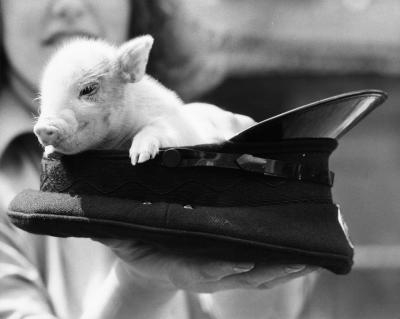 How to Play With a Mini Pig
How to Play With a Mini Pig
How to Pla
How to Play With a Mini Pig
How to Play With a Mini Pig
How to Pla
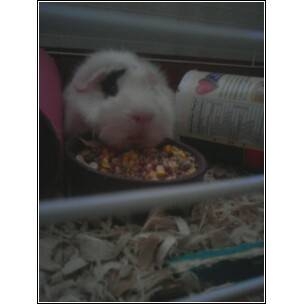 How to Make Guinea Pig Toys
How to Make Guinea Pig Toys
How to Mak
How to Make Guinea Pig Toys
How to Make Guinea Pig Toys
How to Mak
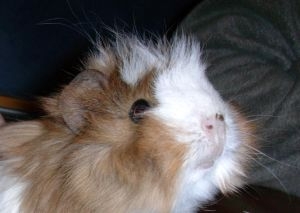 How to Name a Guinea Pig
How to Name a Guinea Pig
How to Name a
How to Name a Guinea Pig
How to Name a Guinea Pig
How to Name a
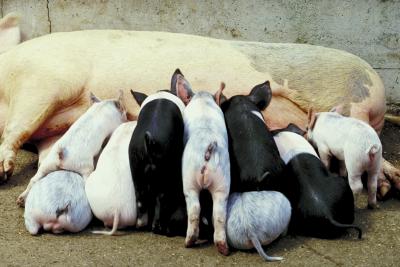 How to Start Pig Farming
How to Start Pig Farming
How to Start
How to Start Pig Farming
How to Start Pig Farming
How to Start
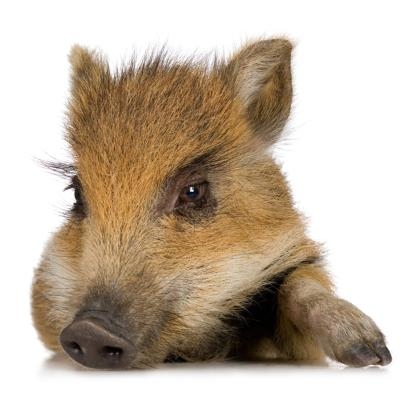 How to Potty Train a Pot-Bellied Pig
How to Potty Train a Pot-Bellied Pig
H
How to Potty Train a Pot-Bellied Pig
How to Potty Train a Pot-Bellied Pig
H
Copyright © 2005-2016 Pet Information All Rights Reserved
Contact us: www162date@outlook.com